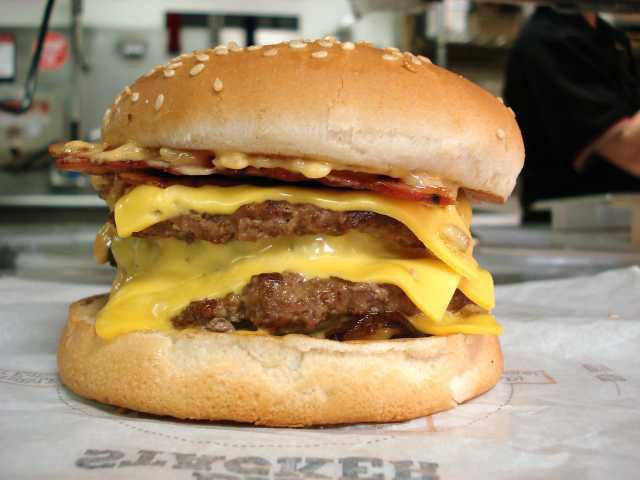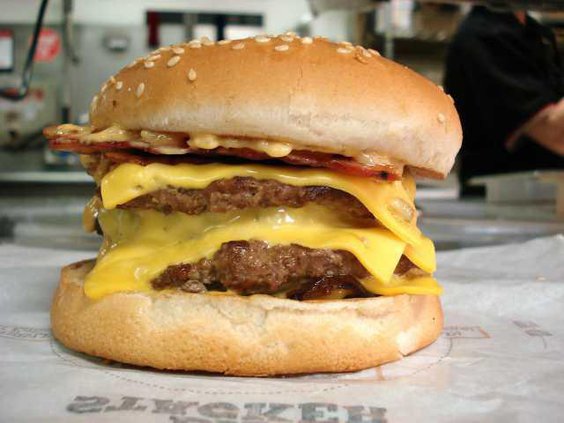Studies in regards to how much fast food kids from families at different income levels consume show contradictory findings.
But among the numbers, one thing isn't up for discussion: One in three U.S. children eats fast food "on any given day," according to The Guardian.
American kids also recieve 16.9 percent of calories from fast food, and a New York Times piece indicated "it made no difference whether the teen was a boy or girl, rich or poor, overweight or not" though contrasts did exist among different races and ethnicities.
So what about those theories that link lowest-income families, a group suffering from the national obesity epidemic, with high fast-food consumption?
A new study by the Centers for Disease Control and Prevention and other research show poor families' nutrition obstacles aren't so simple, according to The Atlantic.
Roberto A. Ferdman wrote for The Washington Post that the study's main finding is this: The U.S. loves fast food, and if anything, low-income kids eat the least of it.
"Well-off kids, poor kids, and all those in between tend to get about the same percentage of their calories from fast food, according to a survey of more than 5,000 people," Ferdman wrote. "More precisely, though, it's the poorest kids that tend to get the smallest share of their daily energy intake from Big Macs, Whoppers, Chicken McNuggets, and french fries."
According to the CDC's study, children in families just above the poverty line get 11.5 percent of calories from fast food, with other kids around 13.1 percent. In fact, poorer kids in both age groups studied ages 2-11 and 12-19 garnered the lowest portion of their calories from the meals Ferdman mentioned.
The narrative based on children of low-income families flocking to fast food was spurred by a national study that concluded "low prices, convenience and free toys target the middle class especially budget-conscious, hurried parents very well," The Atlantic's article read.
Due to the stakes of such claims, Ferdman called that link "dangerous" because one, it just isn't true, and two, narratives with little support to back them up distract people from finding the true root of obesity in poverty.
Solution-seekers might want to pay just as much attention to health issues in the home, according to Bloomberg.
Bloomberg's report stated youths in poor households struggle to get as much exercise if the streets around them are unsafe, something families from other income brackets don't deal with; metabolic changes growing up in an unstable environment could also contribute to weight gain among the poor.
And according to The Atlantic, fast food establishments aren't the only settings where parents and their kids make unhealthy eating decisions.
"Some researchers suggest that its actually supermarkets, those ammonia-dusted empyreans and oft-cited silver bullets, that play an outsized role in the national obesity problem," The Atlantic's piece read. "Thats not to say that fast food is good for you, but rather that Americans having cheap access to sugary goods might be a bigger problem."
Yael Lehmann, executive director of the Food Trust, told Bloomberg CDC's study "opens up more questions" for those who seek to combat childhood obesity.
Latest causes stories:
No poverty, hunger in 15 years? UN sets sweeping new goals
How to get the world's most influential leaders to pay attention to your tweets
Why remittances lift people out of poverty, but not poor countries
But among the numbers, one thing isn't up for discussion: One in three U.S. children eats fast food "on any given day," according to The Guardian.
American kids also recieve 16.9 percent of calories from fast food, and a New York Times piece indicated "it made no difference whether the teen was a boy or girl, rich or poor, overweight or not" though contrasts did exist among different races and ethnicities.
So what about those theories that link lowest-income families, a group suffering from the national obesity epidemic, with high fast-food consumption?
A new study by the Centers for Disease Control and Prevention and other research show poor families' nutrition obstacles aren't so simple, according to The Atlantic.
Roberto A. Ferdman wrote for The Washington Post that the study's main finding is this: The U.S. loves fast food, and if anything, low-income kids eat the least of it.
"Well-off kids, poor kids, and all those in between tend to get about the same percentage of their calories from fast food, according to a survey of more than 5,000 people," Ferdman wrote. "More precisely, though, it's the poorest kids that tend to get the smallest share of their daily energy intake from Big Macs, Whoppers, Chicken McNuggets, and french fries."
According to the CDC's study, children in families just above the poverty line get 11.5 percent of calories from fast food, with other kids around 13.1 percent. In fact, poorer kids in both age groups studied ages 2-11 and 12-19 garnered the lowest portion of their calories from the meals Ferdman mentioned.
The narrative based on children of low-income families flocking to fast food was spurred by a national study that concluded "low prices, convenience and free toys target the middle class especially budget-conscious, hurried parents very well," The Atlantic's article read.
Due to the stakes of such claims, Ferdman called that link "dangerous" because one, it just isn't true, and two, narratives with little support to back them up distract people from finding the true root of obesity in poverty.
Solution-seekers might want to pay just as much attention to health issues in the home, according to Bloomberg.
Bloomberg's report stated youths in poor households struggle to get as much exercise if the streets around them are unsafe, something families from other income brackets don't deal with; metabolic changes growing up in an unstable environment could also contribute to weight gain among the poor.
And according to The Atlantic, fast food establishments aren't the only settings where parents and their kids make unhealthy eating decisions.
"Some researchers suggest that its actually supermarkets, those ammonia-dusted empyreans and oft-cited silver bullets, that play an outsized role in the national obesity problem," The Atlantic's piece read. "Thats not to say that fast food is good for you, but rather that Americans having cheap access to sugary goods might be a bigger problem."
Yael Lehmann, executive director of the Food Trust, told Bloomberg CDC's study "opens up more questions" for those who seek to combat childhood obesity.
Latest causes stories:
No poverty, hunger in 15 years? UN sets sweeping new goals
How to get the world's most influential leaders to pay attention to your tweets
Why remittances lift people out of poverty, but not poor countries

